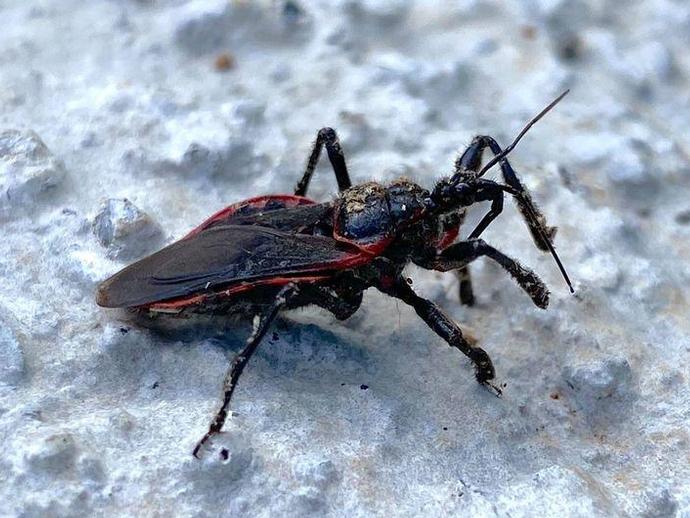July 13, 2021
It's time for the Tuesday edition of #BenInNature presented by our friends at Carter Bank & Trust!
Assassin bugs like this Apiomerus crassipes are some of the apex predators of the insect world, hiding amongst the leaves of flowering plants and waiting for an unfortunate insect to come along ... at which point they strike, jabbing their sharp proboscis into their prey and sucking it dry!
Apiomerus crassipes is commonly called the "bee assassin," although that name is a bit of a misnomer. While there are claims that these assassin bugs actively prey on honeybees, there isn't much concrete evidence to support those claims. At the very least, it's doubtful that they have any sort of preference for honeybees, instead striking out at whatever insect has the misfortune to land near them.
The bee assassin's front legs are coated in a sticky resin that helps them grab their prey. While they prefer insects, assassin bugs will bite humans if handled roughly, and the bite is apparently fairly painful (although generally not medically significant). While you should avoid handling them, bee assassins are definitely beneficial to have in your garden as they'll eat a number of pest insects while leaving your plants unharmed.
ABOUT #BenInNature
Social distancing can be difficult, but it presents a great opportunity to become reacquainted with nature. In this series of posts, Administrator of Science Ben Williams ventures outdoors to record a snapshot of the unique sights that can be found in the natural world. New updates are posted Monday - Friday, with previous posts highlighted on the weekends. This series of posts is made possible thanks to the support of VMNH Corporate Partner Carter Bank & Trust (www.cbtcares.com).
NATURE PHOTO IDENTIFICATIONS
If you discover something in nature that you would like help identifying, be sure to message us right here on Facebook with a picture (please include location and date of picture) and we'll have our experts help you identify it!

 Hours & Admissions
Hours & Admissions Directions
Directions

